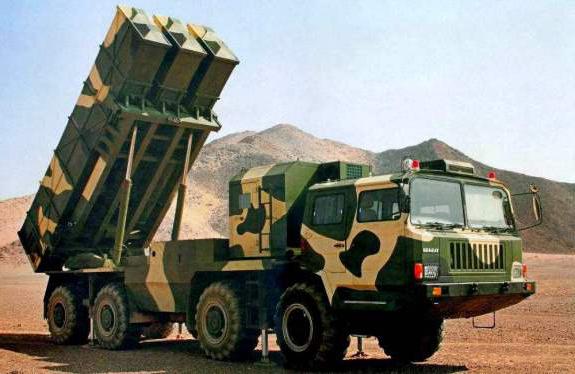Installation "Tornado" - a second-tier unit, designed to provide fire support to motorized rifle units. It is used to launch salvo and single attacks on artillery, manpower, and armored vehicles that are on the march, when deployed, in the defense zone, in combat readiness, in open areas or in shelters, in the concentration area.
Story
Installation of volley fire "Tornado" - the heiress and relative of the famous multiple launch rocket system "Grad", which appeared with the Soviet Union in the distant 1964. It was truly a terrifying weapon, which few could resist. However, any weapon has its own resource, and the Grad, having been in service for more than four decades, has become necessary to replace with a newer system. During this time, other multiple launch rocket systems were developed - Hurricane, Tornado. Installation "Tornado" was developed not so long ago. It was first tested in 2011 on September 25 at a test site called Kapustin Yar. During the exercises, the command of the troops of the Russian Federation and Kazakhstan was present at the training ground. The Tornado complex in 2012 in July was adopted by the artillery at the legislative level.
Features
"Tornado" - the installation, the photo of which is presented above, has a number of changes compared to its predecessors. A gyrocourse krenoukazator with self-orientation to the launch package was installed, as well as equipment for remote input of parameters and target data. The installation is equipped with a device for transmitting information in automatic mode about the exit of a missile from the barrel. There is a navigation and guidance system via satellite. A special apparatus is also installed on the machine for setting the time for the detonator's explosion. This was done so that the Tornado installation could fire with new rockets.
Structure
The Tornado system includes: a system for automatic fire control called “Skit”, a combat vehicle 2B17-1. The Kapustnik (1V126M series) consists of a control point and an observation point. Also included are old and new models of rockets of 122 mm caliber.
Design
Installation "Tornado" was developed in several forms on a unified chassis, which were considered KamAZ and Ural vehicles. A single platform allows minimizing operating costs by eliminating the various types of chassis of multiple launch rocket systems that currently exist: Eiy-131 (installed on the Grad system), MAZ-543M (Smerch system), Ural- 375 "and" Ural-4320 "," Ziy-135 LMP "(" Hurricane "system). A new unified single carriage is mounted on the new chassis, on which a package of interchangeable guides is mounted. This will make it possible to use besides the caliber 122 mm and the calibers 220 mm and even 300 mm. The presence of two sets of packages on loading and transporting machines will reduce the time for reloading from seven minutes to three. The module can be replaced in the shortest possible time in the field. This provides the Tornado system with the opportunity to use the entire range of its ammunition, expanding its combat capabilities.
Differences from predecessors
Installation "Tornado", whose characteristics exceed the characteristics of the MLRS "Grad" several times, is actively used in the armed forces. This was made possible by improving the ammunition parameters. The latest automated fire and guidance control system is installed in the cockpit of the combat vehicle, which includes the gunner’s remote control, the Baguette 41 flight computer. This allows you to fire at the desired targets without topographic and geodetic preliminary preparation of the vehicle, direct packets directly from the cockpit. The operator’s monitor displays all the necessary information in real time. The combat crew was reduced to a couple of people. A prepared Tornado position unfolds in one minute, and an unprepared position in less than five. MLRS has the highest mobility. During the launch of the rocket before the time of its detonation, the installation manages to leave at a distance of five kilometers from the launch site. This significantly increases the survival of the complex. The Tornado installation has modifications: installation of a fire control system from self-propelled guns, equipment for protecting transmitted and received information. There is work to create a package design that will allow the use of cruise missiles (CR).

Ammunition
Installation of volley fire "Tornado" can use existing missiles as ammunition, as well as use the latest assortment of developments in the form of in-flight guided missiles. For example, it can be a cluster shell with a detachable warhead and homing combat elements with a cumulative effect. Or a reconnaissance missile capable of “hanging” over a target and working as a target indicator. There are samples that can be used to set minefields remotely.